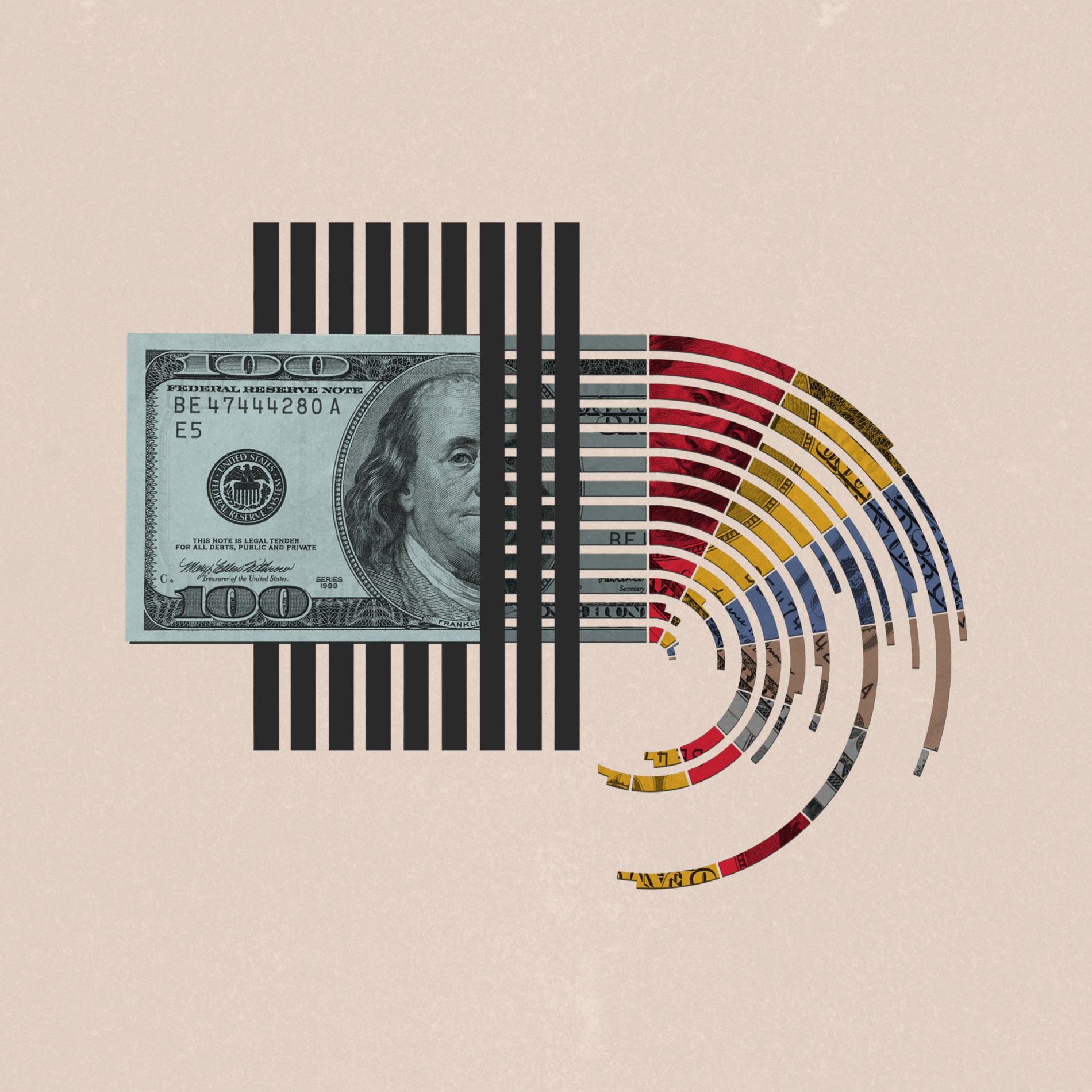Money & the World
The Corrections, 2022: How to Understand What’s Happening in the Markets
The stock market has been, at best, extremely volatile lately. Here’s our quick guide to what happened, what’s likely to happen, and what to do about it.
Wealthsimple makes powerful financial tools to help you grow and manage your money. Learn more
It’s been a — how can we say this – exciting start to 2022 in the markets. They had a particularly bad run last week. This week has gotten off to perhaps an even more tumultuous start. Let’s unpack what happened, and then talk a little bit about what (if anything) investors should do about it. (Hint: It may be more normal than you think.)
The numbers
Since the start of the year, stocks are down across the board. And the most speculative companies — those with the widest range of potential outcomes like early-stage technology companies — have gotten hit the hardest.
The sell-off has been most severe for anything that smells like innovation
The Nasdaq (which broadly tracks US technology stocks) is down about 15% since its November peak. 75% of the companies listed on the exchange are down more than 20%. And indexes that track “cutting edge” technology — like cloud computing — are down even more. And let’s not get started with ARKK, the (in)famous “innovation-focused” fund managed by Cathie Wood… it’s down about 40% since November.
Outside of tech, the prices are down much less
Canada’s TSX is only down about 6% from its peak in November. The US S&P 500 is down about 10% from its peak earlier this year (tech stocks accounted for half of the fall). And markets outside of the US (which generally have less tech exposure) are down about 6% from their peaks. And in fact, global energy stocks are actually up on the year (although energy is the only sector that can say that).
The losses have only, thus far, erased recent gains
The sell-off has been bigger than anything we’ve experienced since March 2020, and it’s been devastating for some individual companies’ stocks. But for the broader indexes that make up most of investors' portfolios (like the S&P and TSX), the plunge has merely undone a couple of months of gains and put them back to where they were in October. Even for the tech indexes, recent losses simply mean they are back to where they were last summer. The falls have been steep, but seen through a longer lens, they mostly mean that they’ve erased recent rallies.
What’s causing the slide?
Market moves are always slightly chaotic and mystifying in the moment, and become clearer with the benefit of hindsight. But we’ve got some good ideas about a few factors that have been at play. Namely: high expectations, inflation fears, and panic.
High expectations
Stock prices were well above all-time highs. As we wrote before, those prices could be justified if earnings stayed strong. Of course, the flip-side is that even mild disappointment would be enough to cause prices to plummet. And we’ve seen signs of investors revising down those expectations (and what they think a fair price is for certain stocks). Case in point? Netflix — which revised down its expectations over the weekend and promptly fell 20%.
Inflation + tightening
Investors have realized that central banks are serious about raising rates to stop inflation, which means that interest rates are going up, which means it’s becoming more attractive to put your money in places besides the market (and makes it more expensive for people who borrow to buy stocks). That tends to result in lower prices for stocks. The US Fed will give more colour on their plans, and many investors are waiting with bated breath.
The snowball of panic
Falling prices often beget… falling prices. Some investors have been buying with borrowed money to increase their potential upside (taking on what’s called “leverage”), and as stocks fell they were forced to cut their positions. Meanwhile, data suggests that upon seeing falling stock prices retail traders began to panic and liquidate their positions over the last couple of days. Both caused prices to fall further.
What’s the bigger picture?
The question on everyone’s mind is, “Is this just another dip, a once-in-a-decade cyclical downturn, or the beginning of a once-in-a-lifetime super bust that’ll never reverse?”
At this point, the biggest risk of a prolonged downturn is (likely) inflation. Inflation is higher than it’s been in decades, and it could very well take a lot of tightening for policy-makers to get it back under control. A continuing cycle of prolonged inflation and increasing interest rates would be very bad for stocks. The last time it came around was the ’70s, and stock investors essentially experienced a lost decade. Thus far, the data suggests this is unlikely: inflation is lower than it was then, households have been delaying purchases as opposed to panic buying, and in line with that markets are pricing inflation to be temporary.
Stock prices are already baking in a lot of inflation and tightening over the next year. That means if there’s good news on inflation, there could be a rally. Some of the loudest pessimists have been predicting the apocalypse every year since 2011, and missed out on all the gains since then. And temporary corrections happen all the time. In fact, if you look back to 1980, at some point every year the S&P 500 has experienced drops of an average of 14% at some point — even though the index has ended in positive territory 2/3 of those years. Looking back, this stock drawdown could just as easily be a blip as the start of a downturn.
What should you do?
Well, you really only have three options…
Try to buy the dip
This strategy has worked well for some in recent years. But timing is everything in dip-buying, and timing the market is really hard. For example, in the early 2000s tech crisis, the Nasdaq lost 80% over 2.5 years, and any early dip buyers were left without their shirts. And this dynamic has played out after other big crashes like Japan in 1989 or US in 1929, both of which took years to bottom and decades to recover.
Panic
Panic actually works if you get your timing exactly right. Historically, though, almost no one gets the timing even close to right, so it ends up being a bad strategy. Retail traders who have panicked have tended to regret it because they didn’t get the timing right — either when they sold or when they bought back in or, likely, both. For example, retail traders pulled over $150 billion out of the stock market in March 2020 at the bottom of the crisis, and only reinvested over the summer after stocks were well above peak.
Stay the course
It may be tempting to “go with your gut” in the moment. But given how hard it is to time markets, the most historically successful way to make money is to have a smart plan that suits where you are in your life and what your financial needs are, invest in diversified portfolios (instead of whatever’s hot at the moment) and… stay the course. Boring, but it doesn’t always feel boring in the moment. Here’s to more boring days ahead.
Matthew Karasz is the Director of Investment Research at Wealthsimple.
The content on this site is produced by Wealthsimple Media Inc. and is for informational purposes only. The content is not intended to be investment advice or any other kind of professional advice. Before taking any action based on this content you should consult a professional. We do not endorse any third parties referenced on this site. When you invest, your money is at risk and it is possible that you may lose some or all of your investment. Past performance is not a guarantee of future results. Historical returns, hypothetical returns, expected returns and images included in this content are for illustrative purposes only.





